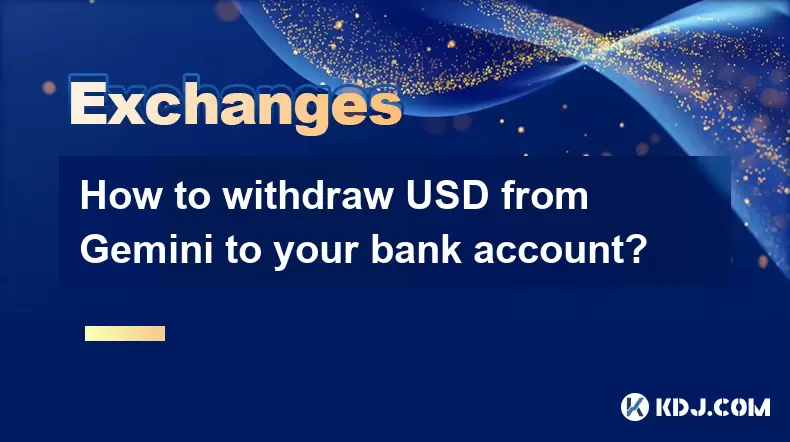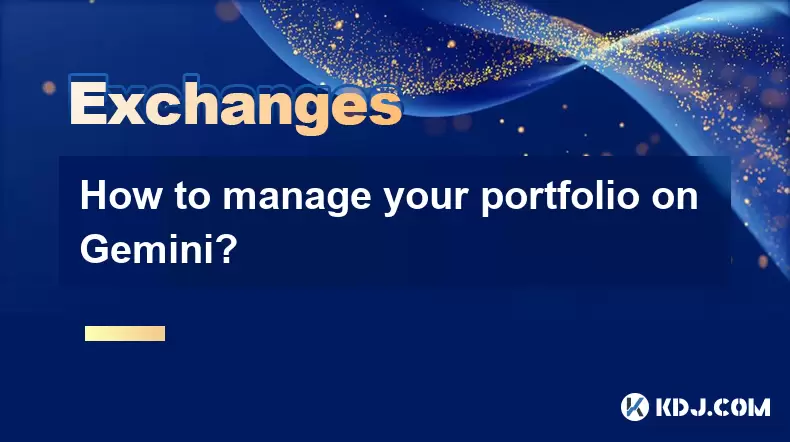-
 Bitcoin
Bitcoin $115000
0.12% -
 Ethereum
Ethereum $3701
4.50% -
 XRP
XRP $3.081
2.99% -
 Tether USDt
Tether USDt $0.0000
-0.01% -
 BNB
BNB $767.9
1.45% -
 Solana
Solana $169.5
3.13% -
 USDC
USDC $0.9999
0.01% -
 Dogecoin
Dogecoin $0.2106
4.30% -
 TRON
TRON $0.3334
1.62% -
 Cardano
Cardano $0.7564
2.54% -
 Stellar
Stellar $0.4165
0.76% -
 Hyperliquid
Hyperliquid $38.75
0.25% -
 Sui
Sui $3.593
3.00% -
 Chainlink
Chainlink $17.08
3.59% -
 Bitcoin Cash
Bitcoin Cash $573.6
4.35% -
 Hedera
Hedera $0.2508
-0.84% -
 Avalanche
Avalanche $23.07
6.46% -
 Ethena USDe
Ethena USDe $1.001
-0.02% -
 Litecoin
Litecoin $120.8
8.17% -
 UNUS SED LEO
UNUS SED LEO $8.943
-0.32% -
 Toncoin
Toncoin $3.400
-5.60% -
 Shiba Inu
Shiba Inu $0.00001255
1.54% -
 Uniswap
Uniswap $9.908
6.32% -
 Polkadot
Polkadot $3.718
2.10% -
 Monero
Monero $303.0
-0.74% -
 Dai
Dai $0.9999
-0.02% -
 Bitget Token
Bitget Token $4.392
0.91% -
 Cronos
Cronos $0.1403
6.31% -
 Pepe
Pepe $0.00001076
1.13% -
 Aave
Aave $267.2
1.80%
How to view transaction history on Coinbase? Data export guide
Coinbase users can easily view and export their transaction history, crucial for accurate records and tax compliance, through the platform's intuitive interface.
Jun 14, 2025 at 03:56 pm

Coinbase, one of the leading cryptocurrency exchanges, offers users the ability to view and manage their transaction history easily. Whether you are a seasoned trader or a newcomer to the crypto world, understanding how to access and export your transaction data is crucial for maintaining accurate records and complying with tax obligations. In this guide, we will walk you through the steps to view your transaction history on Coinbase and provide a detailed data export guide.
Accessing Your Transaction History on Coinbase
To begin, you need to log into your Coinbase account. Once logged in, you can access your transaction history through the following steps:
- Navigate to the Accounts tab: Click on the "Accounts" tab located on the top navigation bar of the Coinbase website or app.
- Select the specific cryptocurrency account: From the list of accounts, choose the cryptocurrency account for which you want to view the transaction history.
- Click on the "Transactions" tab: Within the selected account, you will see a tab labeled "Transactions." Click on this tab to view all the transactions associated with that account.
Once you are on the Transactions page, you will see a detailed list of all your transactions, including deposits, withdrawals, buys, sells, and trades. Each transaction entry will display key information such as the date, type of transaction, amount, and any associated fees.
Filtering and Sorting Transaction History
Coinbase provides options to filter and sort your transaction history, making it easier to find specific transactions or analyze your activity over time. Here’s how you can do it:
- Use the filter options: At the top of the Transactions page, you will find filter options that allow you to narrow down your transaction history by date range, transaction type, and status.
- Sort the transactions: You can sort your transactions by clicking on the column headers. For example, clicking on the "Date" header will sort the transactions chronologically, while clicking on the "Amount" header will sort them by the transaction amount.
By utilizing these filtering and sorting features, you can quickly locate the transactions you need and gain insights into your trading patterns.
Exporting Your Transaction History
Exporting your transaction history from Coinbase is a straightforward process that can be useful for record-keeping, tax preparation, or further analysis. Here are the steps to export your transaction data:
- Go to the Transactions page: Follow the steps outlined earlier to navigate to the Transactions page for the specific cryptocurrency account.
- Click on the "Export" button: At the top right corner of the Transactions page, you will see an "Export" button. Click on this button to initiate the export process.
- Select the export format: Coinbase allows you to export your transaction data in various formats, including CSV, PDF, and OFX. Choose the format that best suits your needs.
- Choose the date range: You can select the date range for which you want to export the transaction data. This is particularly useful if you need data for a specific period, such as a tax year.
- Download the file: Once you have selected the format and date range, click on the "Export" button to download the file to your computer.
After downloading the file, you can open it using the appropriate software, such as Microsoft Excel for CSV files or Adobe Acrobat for PDF files. This exported data will contain all the necessary details of your transactions, including dates, amounts, and fees.
Understanding the Exported Data
When you open the exported file, you will see a detailed breakdown of your transactions. Here’s what you can expect to find in the exported data:
- Date: The date on which the transaction occurred.
- Type: The type of transaction, such as buy, sell, deposit, or withdrawal.
- Amount: The amount of cryptocurrency involved in the transaction.
- Fees: Any fees associated with the transaction.
- Total: The total value of the transaction, including fees.
- Notes: Any additional notes or comments related to the transaction.
Understanding these columns will help you analyze your transaction data effectively and ensure that you have all the information needed for your records or tax purposes.
Tips for Managing Your Transaction History
Managing your transaction history effectively is essential for maintaining accurate records and staying compliant with regulatory requirements. Here are some tips to help you manage your transaction history on Coinbase:
- Regularly review your transactions: Make it a habit to review your transaction history regularly to ensure all transactions are accurate and accounted for.
- Keep backups of exported data: Always keep backups of your exported transaction data in a secure location, such as an external hard drive or cloud storage.
- Use accounting software: Consider using accounting software that supports cryptocurrency transactions to help you manage and analyze your data more efficiently.
- Stay informed about tax regulations: Keep yourself updated on the latest tax regulations related to cryptocurrencies to ensure you are compliant with reporting requirements.
By following these tips, you can effectively manage your transaction history and ensure that you have all the necessary data for your financial and tax needs.
Frequently Asked Questions
Q: Can I export transaction history for multiple accounts at once on Coinbase?
A: Currently, Coinbase does not offer a feature to export transaction history for multiple accounts simultaneously. You will need to export the data for each account individually.
Q: Is there a limit to the number of transactions I can export from Coinbase?
A: Coinbase does not impose a specific limit on the number of transactions you can export. However, very large datasets may take longer to process and download.
Q: Can I view my transaction history on the Coinbase mobile app?
A: Yes, you can view your transaction history on the Coinbase mobile app by following similar steps as on the website. Navigate to the Accounts section, select the desired account, and then go to the Transactions tab.
Q: How often should I export my transaction history from Coinbase?
A: It is recommended to export your transaction history at least once a year, especially around tax season. However, exporting your data quarterly or monthly can help you stay organized and ensure you have up-to-date records.
Disclaimer:info@kdj.com
The information provided is not trading advice. kdj.com does not assume any responsibility for any investments made based on the information provided in this article. Cryptocurrencies are highly volatile and it is highly recommended that you invest with caution after thorough research!
If you believe that the content used on this website infringes your copyright, please contact us immediately (info@kdj.com) and we will delete it promptly.
- Velo Universe, DEX, and DeFi Security: Navigating the Future of Decentralized Trading
- 2025-08-05 09:25:13
- Bitget Wallet Revolutionizes Solana with Gas-Free Transactions: A New Era for DeFi
- 2025-08-05 09:25:13
- Ozak AI, Crypto Boom, and ROI Potential: Is This the Next Big Thing?
- 2025-08-05 09:25:24
- Solana's ETF Hopes & the All-Time High Chase: Is SOL Set to Soar?
- 2025-08-05 09:25:24
- Coinbase's Brian Armstrong and the Art of Focused Work: A Deep Dive
- 2025-08-05 09:25:30
- Uniswap Price Prediction: Bullish Reversal on the Horizon?
- 2025-08-05 09:25:30
Related knowledge

How to set and manage alerts on the Gemini app?
Aug 03,2025 at 11:00am
Understanding the Gemini App Alert SystemThe Gemini app offers users a powerful way to stay informed about their cryptocurrency holdings, price moveme...

How to use the Gemini mobile app to trade on the go?
Aug 04,2025 at 09:14am
Setting Up the Gemini Mobile AppTo begin trading on the go using the Gemini mobile app, the first step is installing the application on your smartphon...

What to do if you forgot your Gemini password?
Aug 04,2025 at 03:42am
Understanding the Role of Passwords in Gemini AccountsWhen using Gemini, a regulated cryptocurrency exchange platform, your password serves as one of ...

What are the websocket feeds available from the Gemini API?
Aug 03,2025 at 07:43pm
Overview of Gemini WebSocket FeedsThe Gemini API provides real-time market data through its WebSocket feeds, enabling developers and traders to receiv...

How to withdraw USD from Gemini to your bank account?
Aug 04,2025 at 11:01am
Understanding Gemini and USD WithdrawalsGemini is a regulated cryptocurrency exchange platform that allows users to buy, sell, trade, and store digita...

How to manage your portfolio on Gemini?
Aug 03,2025 at 10:36am
Accessing Your Gemini Portfolio DashboardTo begin managing your portfolio on Gemini, you must first log in to your account through the official websit...

How to set and manage alerts on the Gemini app?
Aug 03,2025 at 11:00am
Understanding the Gemini App Alert SystemThe Gemini app offers users a powerful way to stay informed about their cryptocurrency holdings, price moveme...

How to use the Gemini mobile app to trade on the go?
Aug 04,2025 at 09:14am
Setting Up the Gemini Mobile AppTo begin trading on the go using the Gemini mobile app, the first step is installing the application on your smartphon...

What to do if you forgot your Gemini password?
Aug 04,2025 at 03:42am
Understanding the Role of Passwords in Gemini AccountsWhen using Gemini, a regulated cryptocurrency exchange platform, your password serves as one of ...

What are the websocket feeds available from the Gemini API?
Aug 03,2025 at 07:43pm
Overview of Gemini WebSocket FeedsThe Gemini API provides real-time market data through its WebSocket feeds, enabling developers and traders to receiv...

How to withdraw USD from Gemini to your bank account?
Aug 04,2025 at 11:01am
Understanding Gemini and USD WithdrawalsGemini is a regulated cryptocurrency exchange platform that allows users to buy, sell, trade, and store digita...

How to manage your portfolio on Gemini?
Aug 03,2025 at 10:36am
Accessing Your Gemini Portfolio DashboardTo begin managing your portfolio on Gemini, you must first log in to your account through the official websit...
See all articles

























































































